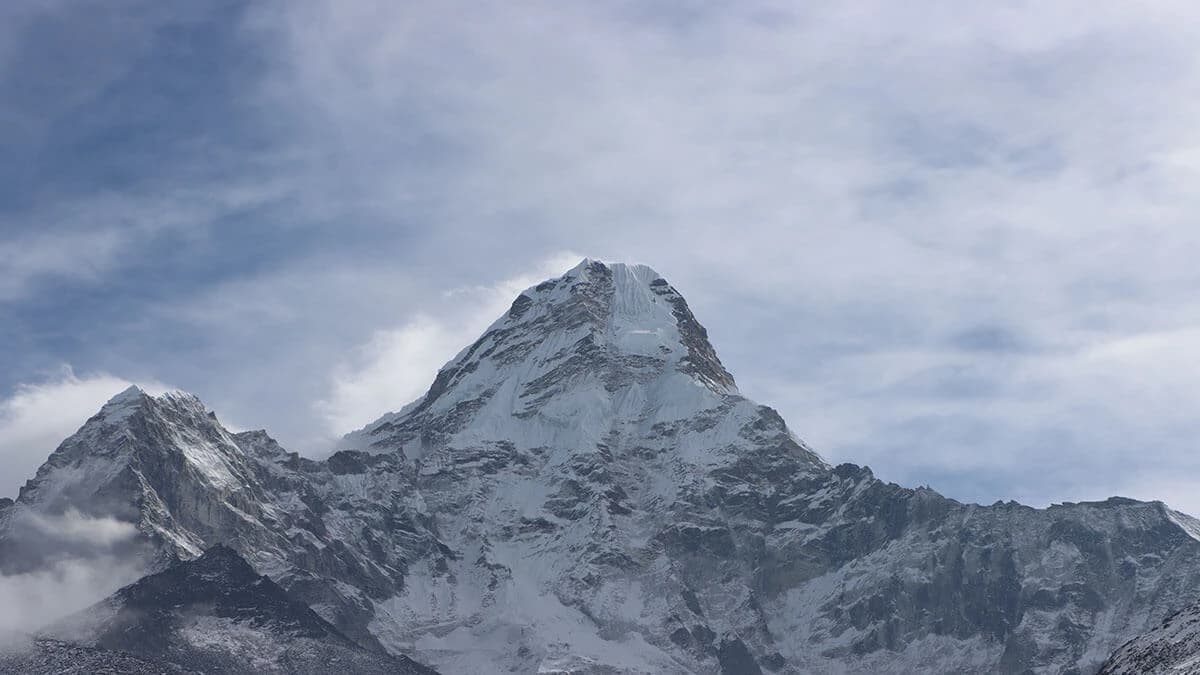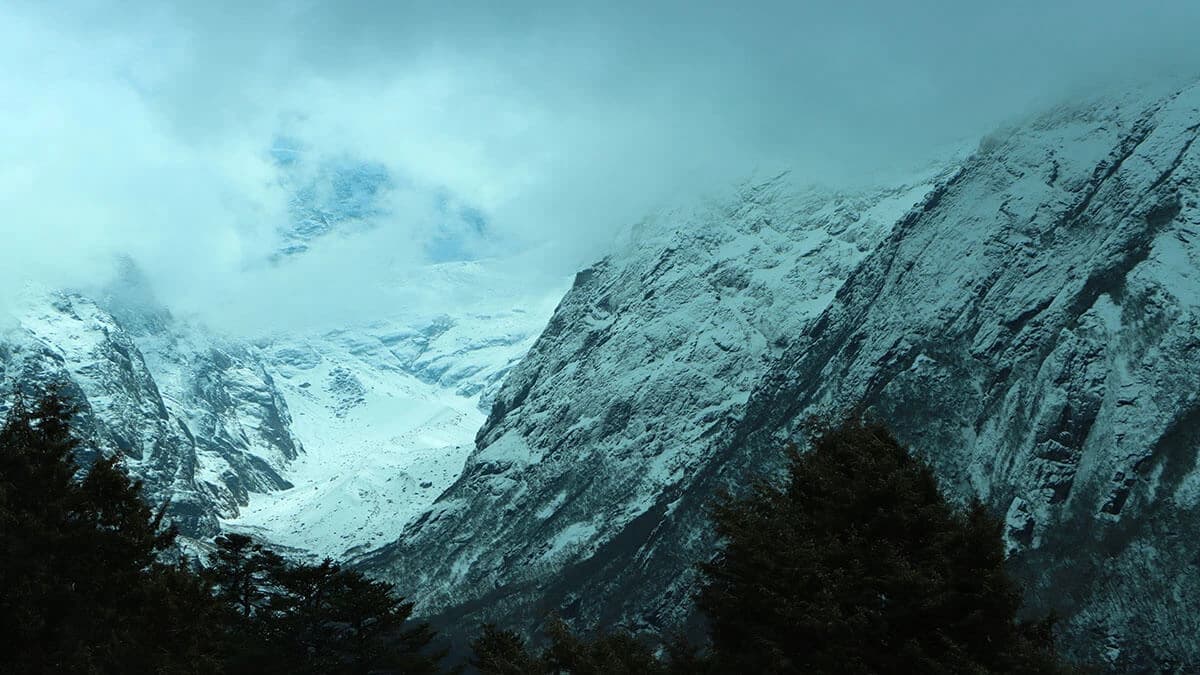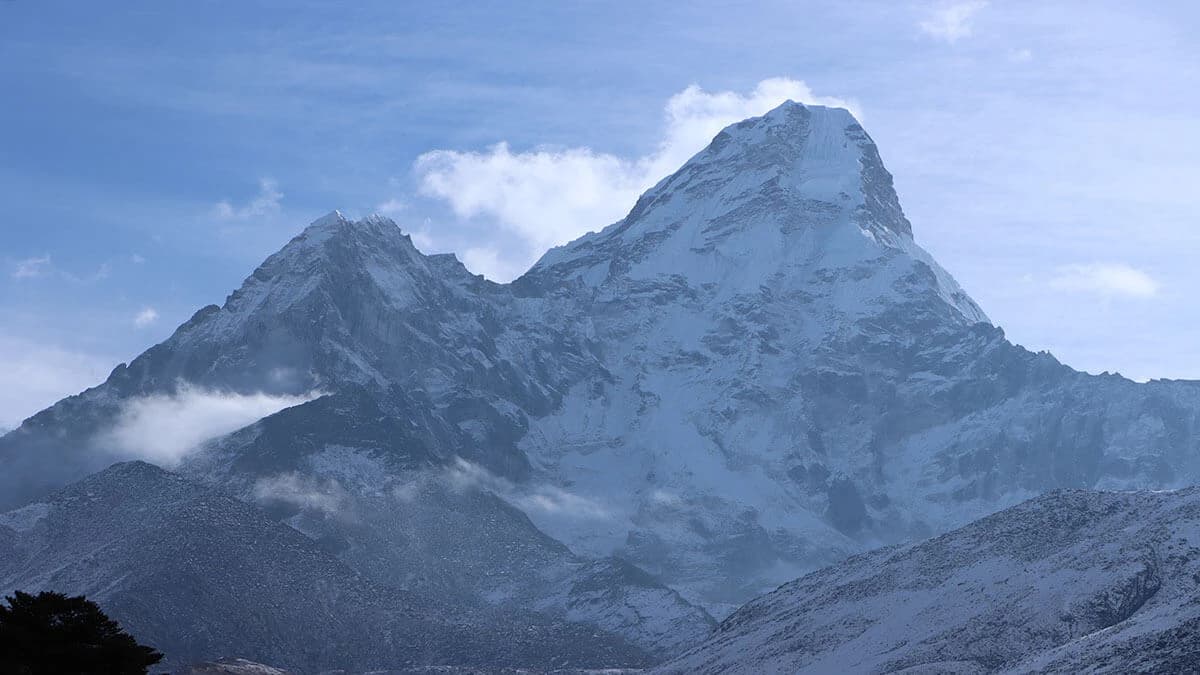Amadablam Expedition Overview
Mount Amadablam Climbing is one of the most breathtaking and thrilling expeditions in the Himalayas. Ama Dablam is a towering, steep peak in eastern Nepal. This 6,812-meter peak has a sharp, pyramidal appearance and is referred to as the “Matterhorn of the Himalayas”. It is a dream climb for many climbers due to its height, difficulty, beauty, and proximity to Mount Everest.
This peak is ideal for seasoned climbers looking to put their abilities to the test on rock, snow, and ice. It is not as high as Everest, but it is trickier to climb. Ropes, harnesses, and climbing gear are required.
Ama Dablam is situated in the Khumbu region of Nepal, which is also home to Mount Everest. In the local Sherpa language, the name “Ama Dablam” translates to “Mother’s Necklace”. The mountain’s long ridges on either side resemble a mother’s arms, while a glacier that hangs close to the summit like a necklace or pendant.
A group of climbers from New Zealand and the United States made the first ascent of the mountain in 1961. Since then, experienced mountaineers from all over the world have come to love the Ama Dablam Expedition. It provides both challenge and beauty, two qualities that every real climber seeks in an adventure.
Amadablam Climbing Route and Camp Setup
Ama Dablam Expedition is well-known for both its thrilling climbing route and its lovely shape. Climbing it from the southwest ridge is the most popular route; it's both picturesque and challenging. Despite being shorter than most major Himalayan climbs, the route still requires excellent climbing abilities, particularly when navigating ropes, boulders, and snow.
Typically, the ascent begins at Base Camp, which is around 4,600 meters above sea level. From there, climbers use three primary high camps to ascend in phases.
- Camp I (5,700m): A strenuous ascent from Base Camp leads to Camp I. It has ample room for a few tents and is situated on a rocky ridge.
- Camp II (6,000m): Camp II is higher and more vulnerable. There is a lot of rock climbing on the route from Camp I to Camp II. Climbers need to utilize fixed ropes and exercise caution in order to proceed securely here.
- Camp III (6,300m): Camp III is situated on a snowy spot directly beneath the summit wall. Early in the morning, climbers make their last push to the summit from this location.
Although difficult, the peak day is incredibly gratifying. With the aid of ropes and gear, you ascend across snow and ice until you reach the summit. Here, you may enjoy breathtaking views of Makalu, Lhotse, and Everest.
Ama Dablam Expedition Cost
Aside from being a great experience, climbing Ama Dablam is also very expensive. The services and support you select, in particular, will determine the final cost. You can opt for a full-service excursion where everything is planned for you, or you can go with a minimal support staff.
Nepal Trekking Routes offers the cost of the Ama Dablam expedition for $7,200, which includes transportation, permits, guides, porters, food, and accommodation. For further information on cost and budgeting, you can contact us at our email or via WhatsApp.
Among the primary expense areas are:
- Climbing Permits: To enter Sagarmatha National Park, you must pay for a specific climbing permit issued by the Nepali government.
- Guides and Sherpas: The expense is increased, but the climb is safer and more organized when knowledgeable guides and support Sherpas are hired.
- Food and lodging: During the journey, you will need to stay in teahouses, and during the ascent, you will need to eat meals at the base camp. Cooks and kitchen workers are also included in this.
- Transportation: This covers your airfare from Kathmandu to Lukla and back, as well as occasionally helicopter services for last-minute or expedited travel.
- Equipment & Gear: Climbing gear and clothing at high altitude are essential and might be costly, whether you hire them or carry your own.
- Oxygen (optional): Some climbers take bottled oxygen as a backup, but it's not always necessary.
- Insurance: You need to purchase travel insurance that includes emergency evacuation and high-altitude rescue coverage.
Preparation and Safety
Although climbing Ama Dablam is thrilling, there are risks involved. Your first concern must be safety. You must exercise caution and listen to your guide's directions because the mountain features steep rock and ice areas.
One of the main worries is altitude sickness. As you ascend, the air becomes thinner, and it takes time for your body to adapt. For this reason, moderate climbs and appropriate acclimatization are crucial. You can prevent issues by eating healthily, getting enough sleep, and drinking lots of water.
The weather is also subject to sudden changes. Snowstorms can develop from clear skies. For this reason, you should always check predictions and include buffer days in your itinerary.
The majority of teams are equipped with first aid packs, radios, and emergency supplies. A helicopter rescue can be required in extreme circumstances. Insurance is crucial since it should cover high-altitude rescue.
You will get emergency-trained guides if you choose our company. If something goes wrong, we know how to keep you safe and act fast.



